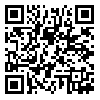Volume 10, Issue 5 (Special Issue on Educational Development 2011)
Iranian Journal of Medical Education 2011, 10(5): 614-624 |
Back to browse issues page
, minaiyan@pharm.mui.ac.ir
Abstract: (18125 Views)
Introduction: Internal assessment is a part of accreditation process to improve the educational quality through academic members’ cooperation. This study aimed to determine the status of pharmacy curriculum through in Isfahan School of Pharmacy and Pharmaceutical Sciences (within 2008-2009) applying the internal assessment process. Methods: This is a descriptive cross-sectional study. Firstly, school internal assessment committee was formed and then areas, indicators, standards and appropriateness ranges were determined. Data collection was done by the checklists and questionnaires (some of which were researcher-designed and some were used before and their validity and reliability had been confirmed). Target population including students, academic members, and managers filled the checklists and questionnaires and other experts involved in related fields. In addition, documentation analysis was done. The data were analyzed by descriptive statistical tests through SPSS software. Results: The school score was assessed appropriate (over 75% of total score) in all seven areas including mission and educational goals, management and organization, curriculum, educational recourses, academic members, students, evaluation and measurement. Main indicators of weakness in some areas included relative satisfaction of academic members and students with working condition, job promotion and teaching quality, lack of enough educational pharmacies and academic members in some educational departments as well as shortage of a logbook for clerkship course, respectively. Conclusion: Appropriateness for most of indicators may be due to the long history of Isfahan School of Pharmacy and its scientific and academic structure. Since the indicators do not have the same efficacy in different areas, possible weaknesses or relative inappropriateness should not be ignored in some areas.
Keywords: Internal assessment, accreditation, curriculum, educational quality, pharmacy and pharmaceutical sciences
Type of Study: other |
Subject:
other
Received: 2011/04/23 | Accepted: 2011/08/4 | Published: 2011/02/15 | ePublished: 2011/02/15
Received: 2011/04/23 | Accepted: 2011/08/4 | Published: 2011/02/15 | ePublished: 2011/02/15
| Rights and permissions | |
 |
This work is licensed under a Creative Commons Attribution-NonCommercial 4.0 International License. |


